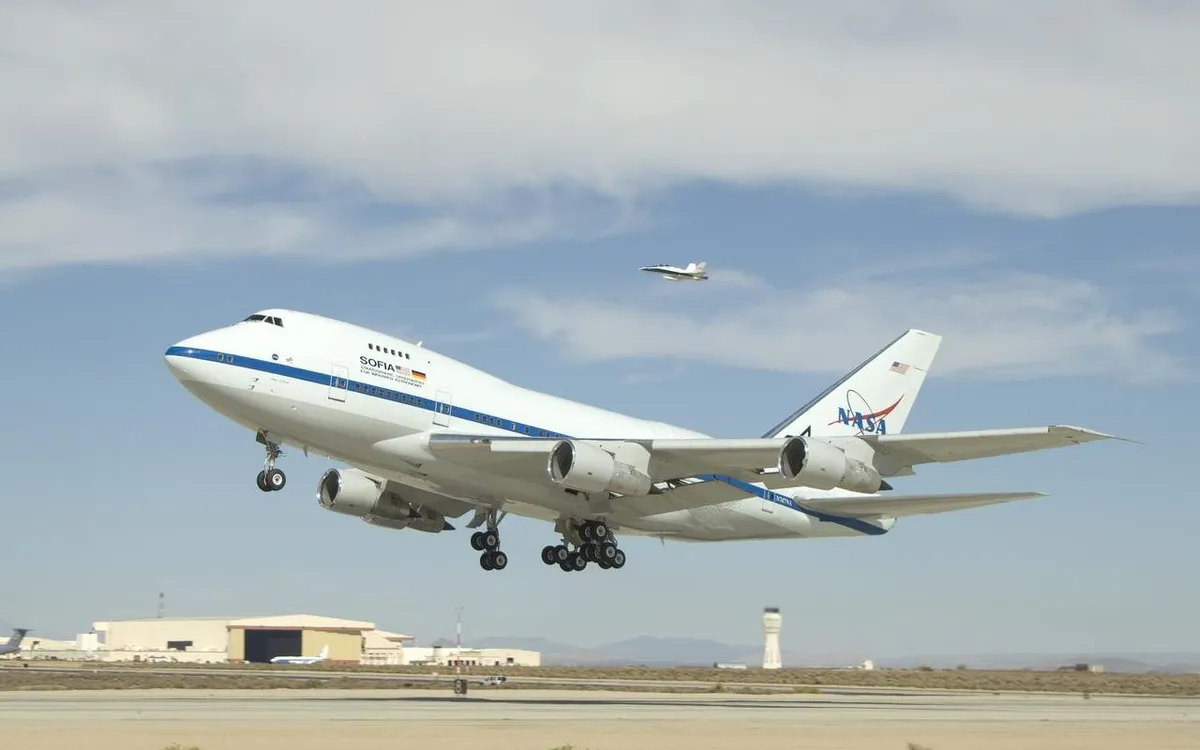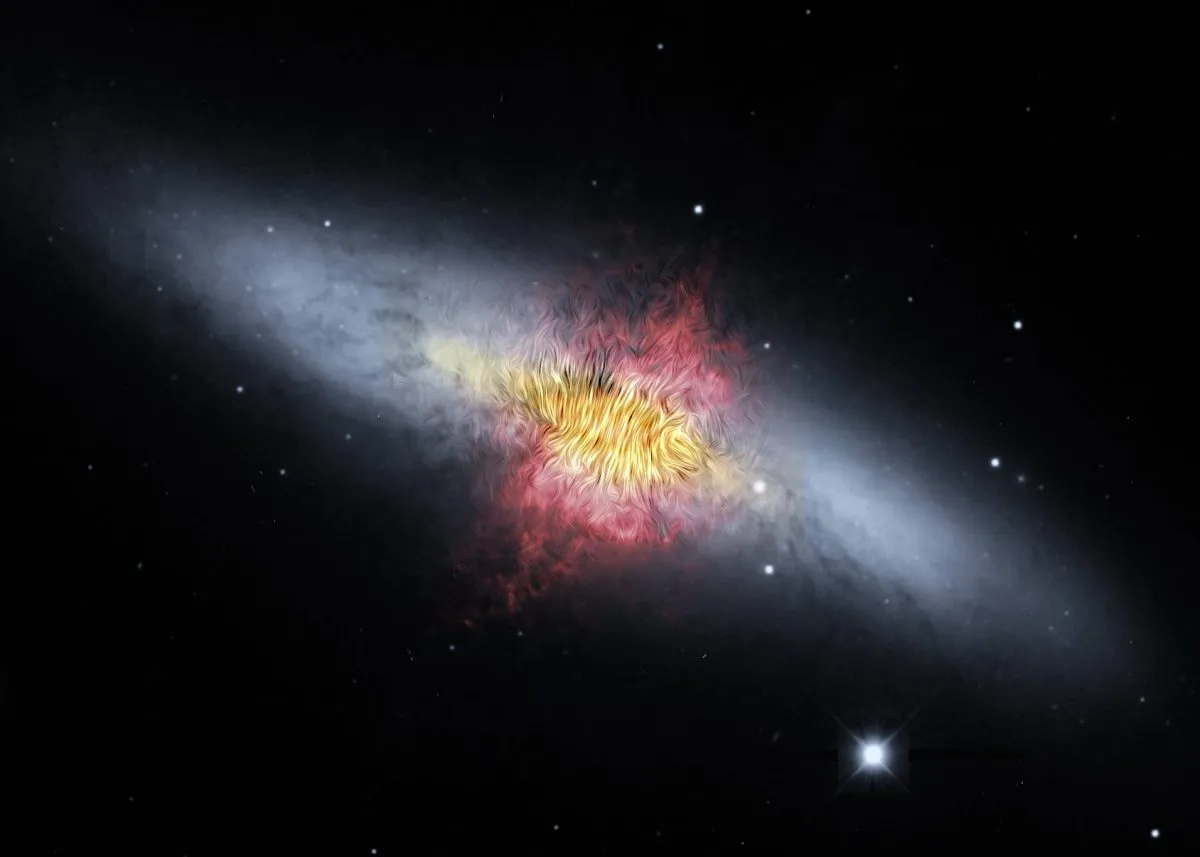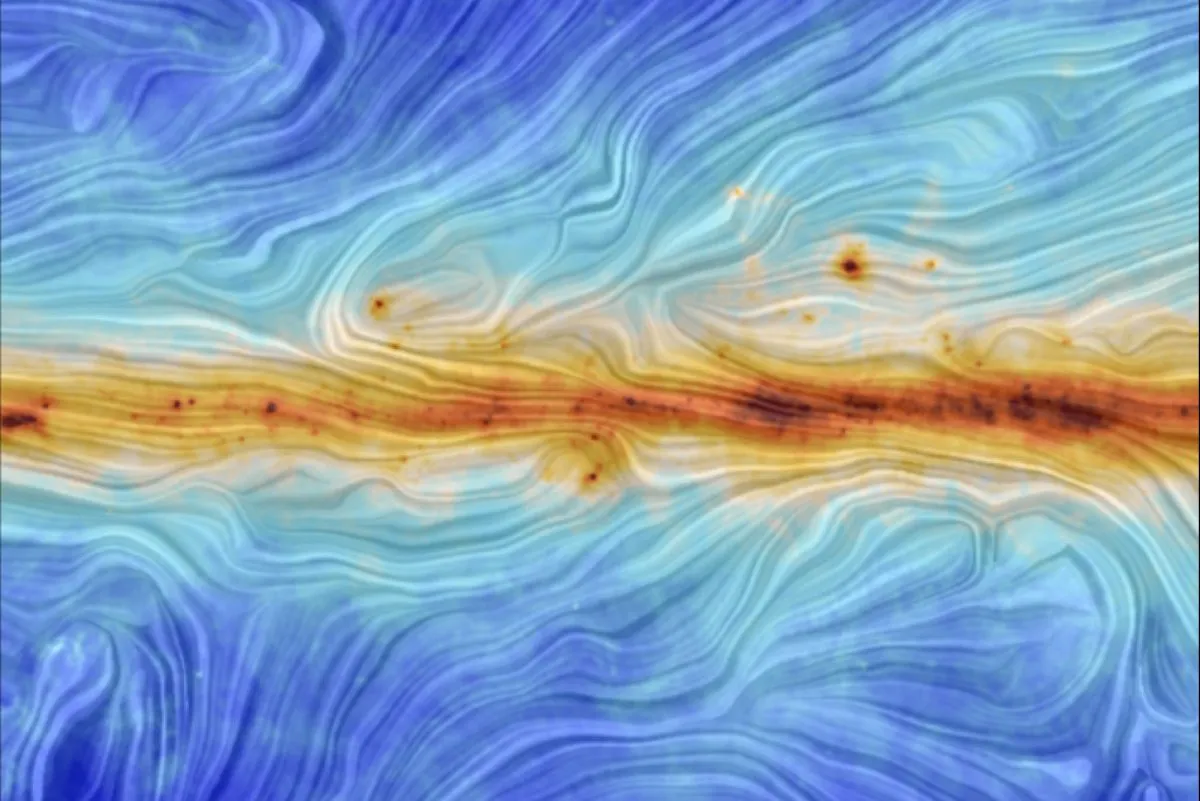The study of so-called galactic winds has a lot to tell astronomers about galaxies, including how they form and evolve over time. Looking at the galactic winds around the Cigar Galaxy, M82, a team of astronomers are unlocking vital clues about how galaxies form in the first place.
We spoke toEnrique Lopez-Rodriguez, a scientist at NASA's SOFIA airborne observatory and based at Ames Research Center in California, to find out more about his work, and how it might reveal the secrets of galactic evolution.

What is galactic wind?
Galactic winds are the flow of matter, in the form of gas and dust, expelled from a galactic plane. The plane is where most of a galaxy’s matter is located.
Anything outside that is intergalactic material, and anything outflowing is called winds. Usually, these are in the polar directions, perpendicular to the galactic plane.
Why did you study M82, the Cigar Galaxy?
In this ‘starburst’ galaxy, the core contains a huge star formation region that is collapsing matter dominated by gravitational forces to form new stars. It pushes matter outside the galaxy through outflows.
From an observational point of view, M82 is very close and bright, while from a scientific viewpoint, it’s one of the most powerful and most violent star formation galaxies in the nearby Universe.
For studies of galaxy evolution, you need to set baselines. As well as studying galaxies that are not active in star formation, you need to study those at the other extreme, dominated by star formation.
This will allow us to stretch the basics of our knowledge, in order for us to study more complex galaxies further away from Earth, from earlier in the Universe.

How do you study galactic winds?
We used SOFIA (the Stratospheric Observatory for Infrared Astronomy), an airborne observatory with a 2.5 metre-telescope fitted on a Boeing 747.
SOFIA studies the thermal emission of objects in the Universe – the light absorbed by dust and then emitted again at a specific temperature.
In our new published study we used a new instrument called HAWC+ (High-resolution Airborne Wideband Camera+). This studies the effect of the magnetic field on the dust.
We cannot measure the magnetic field itself because we would need to be in situ, but we can study its indirect effect on matter.
If there is a magnetic field and it’s strong enough, it will change the overall direction of the dust so it aligns in one direction. HAWC+ detects the signature of grains affected by the magnetic field.
We hypothesised the outflows needed to do something with the magnetic field of the Cigar Galaxy.

What did you find?
We flew for three hours, with two hours of observations. Half an hour after these began we saw the signature of the magnetised dust grains along the direction of the galactic winds.
We saw the effect that was theoretically predicted in the magnetic field of the outflows. We viewed the signature of the aligned dust grains following the direction of the galactic wind – not just in the direction of the galaxy’s plane.
The wind is dragging the magnetic field across 2,000 lightyears.Now we have this data point, it means we can look at younger galaxies.
Do we see these effects in the galaxies that are being created in the early Universe? If not, what’s the difference between them and how does that change with galaxy evolution?

How might galactic winds seed galaxies?
We have several theories of how galaxies form, and we know that in their evolution they need to interact with each other by dragging matter and changing the gravitational force.
We also know that magnetic fields are everywhere in the Universe: the only difference is the strength.
When you look at the magnetic field in the intergalactic medium, it is insignificant. So somehow the galaxy is magnifying the magnetic field due to the flow of matter within it.
Our results are telling us that galactic winds are able to drag the magnified magnetic field into the intergalactic medium.
If you have galaxies interacting, you have a strong magnetic field that may influence galaxy evolution in the early stage of the Universe.
What’s next in the quest to understand galaxy evolution?
This is the first and only result we have. We will examine more galaxies to see if we can see this effect again.
In a year or two we will have a sample of 15 or 20 galaxies which will give us more of an idea of how intergalactic winds and magnetic field interactions affect galaxy evolution.
Enrique Lopez-Rodriguez is a scientist on SOFIA and instrument scientist of HAWC+, based at NASA’s Ames Research Center in California. This interview originally appeared in the June 2019 issue of BBC Sky at Night Magazine.
